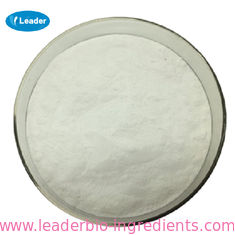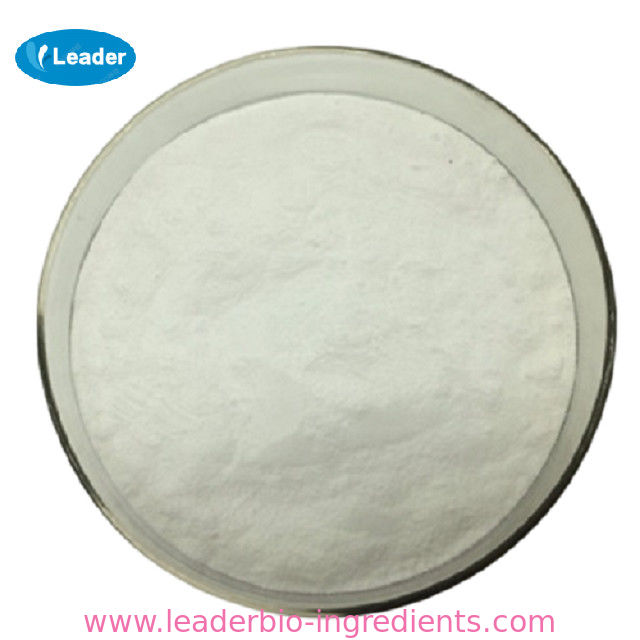| Iodopropynyl butylcarbamate Basic information |
| |
| Iodopropynyl butylcarbamate Chemical Properties |
| Melting point |
64-68 °C(lit.) |
| Boiling point |
321.8±25.0 °C(Predicted) |
| density |
1.606±0.06 g/cm3(Predicted) |
| storage temp. |
Refrigerator |
| pka |
12.03±0.46(Predicted) |
| form |
neat |
| Merck |
14,5069 |
| Stability: |
Stable. Incompatible with strong oxidizing agents. |
| InChIKey |
WYVVKGNFXHOCQV-UHFFFAOYSA-N |
| CAS DataBase Reference |
55406-53-6(CAS DataBase Reference) |
| EPA Substance Registry System |
3-Iodo-2-propynyl butylcarbamate (55406-53-6) |
| Hazard Codes |
N |
| Risk Statements |
50/53-50 |
| Safety Statements |
60-61-29 |
| RIDADR |
3077 |
| WGK Germany |
3 |
| RTECS |
EZ0950000 |
| HazardClass |
9 |
| PackingGroup |
III |
| HS Code |
29241990 |
| Hazardous Substances Data |
55406-53-6(Hazardous Substances Data) |
| Toxicity |
LD50 orally in rats: 1580 mg/kg; dermally in rabbit: >2000 mg/kg; LC50 (96 hr) in bluegill sunfish, rainbow trout, bobwhite quail: 1.12, 0.31, >7683 ppm; LC50 (8 day) in mallard duck: >7182 ppm (Hansen) |
| |
| Iodopropynyl butylcarbamate Usage And Synthesis |
| Description |
Iodopropynyl butylcarbamate is a preservative that has been used as an industrial fungicide since the 1970s and more recently has been combined with formaldehydereleasing agents for use in cosmetics. The North American Contact Dermatitis Group patch tested with 0.1%iodopropynyl butylcarbamate in petrolatum and found 0.2% of their patch test clinic patients had positive reactions to this chemical. Most cosmetic applications appear to require less than 0.012% of this preservative. |
| Chemical Properties |
Liquid |
| Uses |
Glycacil(R) 2000 is used as a preservative in personal care formulations. |
| Uses |
Glycacil(R) L is used as a preservative in personal care formulations. |
| Uses |
Glycacil(R) S is used as a preservative in personal care formulations. |
| Uses |
An antibacterial agent. |
| Uses |
Fungicide; mildewcide; preservative in cosmetics, paints and coatings, metal working fluids; wood protection. |
| Uses |
iodopropynyl butylcarbamate is a preservative with broad fungicidal activity used in skin care products. It is recommended for use in difficult formulation systems. |
| Application |
1. Cosmetics 2. Wood preservatives 3. Paints 4. Metalworking fluids 5. Household products 6. Moistened toilet tissues 7. Contact lenses 8. Building materials 9. Cooling water 10. Adhesives 11. Textiles 12. Paper |
| Definition |
ChEBI: A carbamate ester that is carbamic acid in which the nitrogen has been substituted by a butyl group and in which the hydrogen of the carboxy group is replaced by a 1-iodoprop-2-yn-3-yl group. A fungicide, it is used as a preservative and sapstain control c emical in wood products and as a preservative in adhesives, paints, latex paper coating, plastic, water-based inks, metal working fluids, textiles, and numerous consumer products. |
| General Description |
Off-white solid. |
| Reactivity Profile |
Iodopropynyl butylcarbamate is a carbamate ester. Carbamates are chemically similar to, but more reactive than amides. Like amides they form polymers such as polyurethane resins. Carbamates are incompatible with strong acids and bases, and especially incompatible with strong reducing agents such as hydrides. Flammable gaseous hydrogen is produced by the combination of active metals or nitrides with carbamates. Strongly oxidizing acids, peroxides, and hydroperoxides are incompatible with carbamates. |
| Contact allergens |
Iodopropynyl butylcarbamate (IPBC) is a broad-spec- trum preservative used for years because of its wide field of application, in polymer emulsions and pigment dispersions such as water-based paints and adhesives, cements and inks, as a wood preservative, in metal- working fluids, household products, and cosmetics. Allergic contact dermatitis to IPBC was reported due to cosmetics, from sanitary wipes, and in metalworkers. |
| Contact allergens |
Iodopropynyl butylcarbamate has produced slight irritation in rabbits. However, it was not found to be either a skin sensitizer or a photo sensitizer in guinea pigs. Cosmetic formulations containing up to 0.125% of iodopropynyl butylcarbamate produce no significant irritation or sensitization reactions in human repeated insult patch tests. Iodopropynyl butylcarbamate did not cause crosssensitization reactions in patients who had demonstrated sensitivity to related dithiocarbamate compounds. In the European Union, it is approved as a preservative up to 0.05% and is not to be used in oral hygiene or lip care products. If the concentration exceeds 0.02% in leave-on products, a warning label must indicate that the product contains iodine. |
| Clinical Use |
Iodopropynyl butylcarbamate (3-iodo-2-propynyl-butylcarbamate) is a highly effective fungicide as well as a bactericide. It was first used in the 1970s as a film fungicide for paint and then as a wood preservative, where final use concentration up to 4% was permitted. For paint and coatings usually no more than 0.5% iodopropynyl butylcarbamate is used. For metalworking fluids, adhesives, textiles, and paper, concentrations between 0.1%and 0.2% are common. The Cosmetic Ingredient Review Expert Panel concluded that iodopropynyl butylcarbamate is safe as a cosmetic ingredient in concentrations less than or equal to 0.1%and that it should not be used in products intended to be aerosolized. By 1996, iodopropynyl butylcarbamate was used in 122 formulations reported to the United States Food and Drug Administration. Iodopropynyl butylcarbamate is found in a wide variety of occupational and consumer products, including shampoos, lotions, powders, makeup, baby products, paints, coatings, metalworking fluids, household products, cooling water, building materials, and contact lenses. It is an irritant, although at low concentrations few problems have been reported. |
| |
Iodopropynyl butylcarbamate Preparation Products And Raw materials
|
|

